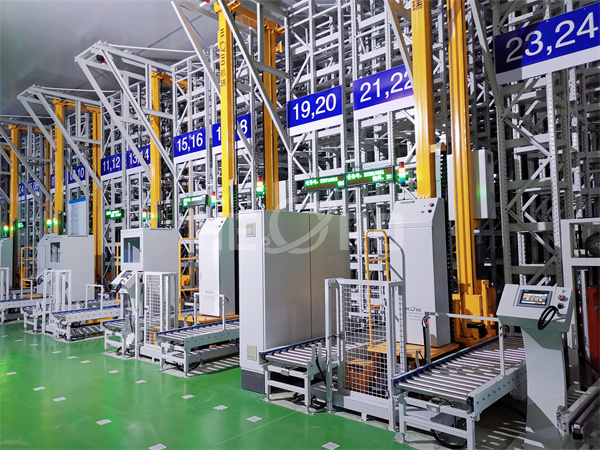In the era of accelerating digital economic development, smart logistics—a critical component of modern supply chains—is undergoing significant transformation. Technological innovations are continuously driving smart logistics toward higher efficiency, greater intelligence, and environmental sustainability, giving rise to several notable trends worth attention.
1. Wider Adoption of Automation
Wider adoption of automation is a prominent feature of smart logistics development. The application of automation technology in the logistics industry will continue to expand. In warehouse management, intelligent robots, with their flexible operational capabilities, can perform a series of processes such as sorting, handling, and shelving of goods, significantly reducing manual labor intensity while keeping sorting error rates at a low level. Automated handling systems achieve seamless transportation of goods between different areas of the warehouse through intelligent scheduling, making the flow of goods more efficient and orderly. Drone delivery has broken through the geographical constraints of traditional delivery, enabling rapid delivery of goods to remote areas or emergency scenarios, significantly improving last-mile delivery efficiency. The application of these automated technologies has effectively reduced reliance on human labor in logistics processes, enhanced logistics processing speed, and laid the foundation for the large-scale development of intelligent logistics.

2. Enhanced Data Analysis and AI Integration
Smart logistics increasingly relies on data analysis and AI technology. Within the smart logistics system, vast amounts of logistics data are collected, analyzed, and utilized, with AI technology serving as a key tool for unlocking data value. By building machine learning models, companies can intelligently analyze historical sales data, market trends, and customer demand information to accurately predict changes in market demand. Based on these predictions, companies can reasonably plan inventory levels to avoid stockpiling or shortages, thereby improving inventory turnover rates. Additionally, AI algorithms can dynamically adjust logistics transportation routes and delivery plans based on real-time traffic conditions, weather information, and order changes, ensuring the flexibility and stability of the supply chain and optimizing the allocation of logistics resources.
3. Integration of the Internet of Things
The integration of the Internet of Things (IoT) enables end-to-end visualization management in smart logistics. IoT technology installs sensors in logistics equipment, transportation vehicles, and cargo packaging to build an interconnected smart network. Through this network, businesses can monitor real-time status information such as cargo location, temperature, and humidity. In case of anomalies, the system immediately issues alerts and notifies relevant personnel for timely handling. In terms of asset management, IoT technology can track and monitor the status of logistics vehicles and warehouse equipment in real time, helping companies reasonably arrange equipment maintenance cycles, reduce equipment failure rates, extend equipment service life, and improve the utilization efficiency of logistics assets. The integration of IoT not only improves the transparency of the logistics process but also enhances companies' ability to control logistics risks.
4. Green Logistics and Sustainable Development
Green logistics and sustainable development have become key directions for the development of intelligent logistics. As environmental awareness continues to grow, the logistics industry's demand for green development has become increasingly urgent, and intelligent logistics is playing a positive role in this area. In the transportation phase, the promotion and application of new energy vehicles such as electric trucks and hydrogen-powered logistics vehicles reduce carbon emissions at the source and minimize environmental pollution. By optimizing transportation routes through intelligent algorithms, companies can reduce vehicle idling rates and mileage, thereby lowering energy consumption. In the packaging process, companies are adopting recyclable packaging materials and optimizing packaging designs to reduce the generation of packaging waste and enhance the environmental sustainability of packaging. The development of green logistics achieves a win-win outcome for both economic and environmental benefits, driving intelligent logistics toward a more sustainable direction.
As technology continues to advance, the trends in intelligent logistics will become increasingly evident. The combination of these trends with innovative applications will continue to drive the transformation and upgrading of the logistics industry, providing stronger support for socio-economic development.
